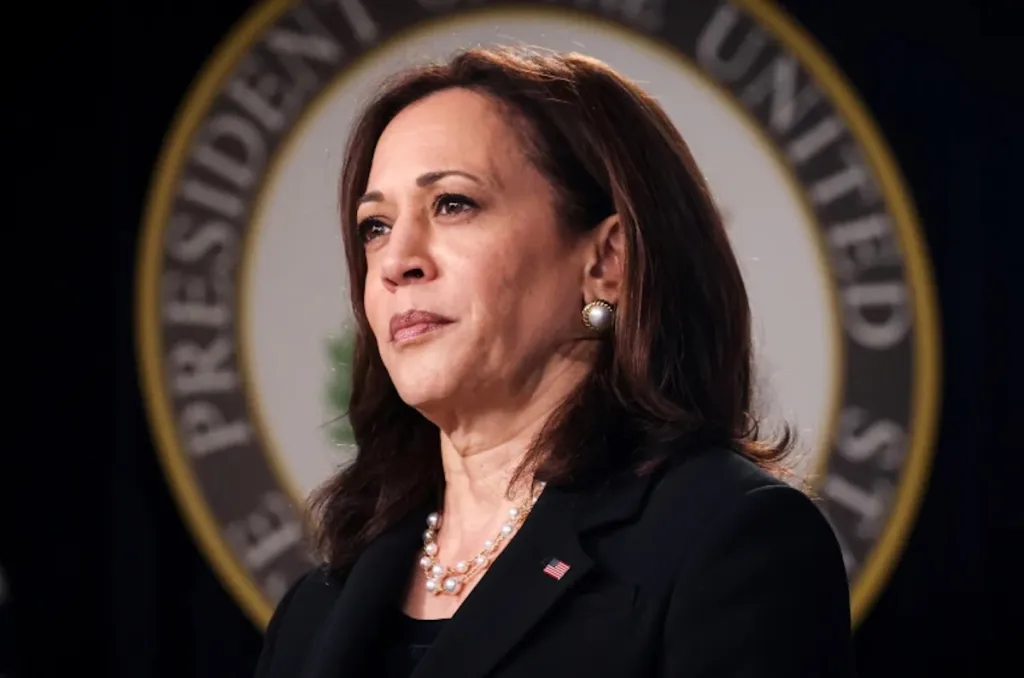
The full consequences of Joe Biden’s seismic decision to withdraw from the 2024 presidential race will take some time to be felt.
One immediately apparent result is the change in electoral dynamics that occurs with a likely candidate meeting a range of different identity criteria, including gender, age and ethnicity.
More importantly, the big question is whether she can win over undecided voters, especially those in a cluster of states that regularly swing between Republicans and Democrats in elections, making it difficult to predict which candidate will triumph on Election Day.
Most of the other (non-swing) states are seen as predictable or at least leaning toward one party’s candidate. This means that candidates’ time and money are wasted in these swing states, which in 2024 include Arizona, Georgia, Nevada, North Carolina, Michigan, Pennsylvania, and Wisconsin.
They count for a lot because the president is not elected by the overall popular vote, but by winning each state. Each state carries a specific number of votes, with states that have large populations getting the most votes.
For example, Pennsylvania holds 19 votes and California holds 54. This system is called the Electoral College (EC), and the EC vote in almost all states is distributed on a winner-take-all basis. Since the EC is 538 votes, candidates need to win states that have a combined EC total of 270 to be elected president.
Kamala Harris is expected to be more able to reduce the shift of minority voters to Donald Trump. She may also be better able to exploit Republican electoral weakness on the issue of reproductive rights, but may have less appeal to non-college-educated white voters.
Democrats are concerned that this latter group of voters is overrepresented in key Midwestern states like Pennsylvania and Wisconsin.
High stakes for vice president
This immediately fueled speculation that Harris’ potential VP pick would be from a swing state. The internet is awash with comical memes about the need to pick a low-risk white man from the Midwest, especially given the immediate Republican response of painting Harris as the DEI (diversity, equity, and inclusion) candidate.
That’s why an early favorite is Pennsylvania Gov. Josh Shapiro, who won a decisive majority in 2022, defeating Trump supporter Doug Mastriano, who attended the Jan. 6 Capitol rally. Another swing-state name on the board is Arizona Sen. Mark Kelly, a former astronaut and generally seen as a level-headed centrist.
Others looked to Democrats with the ability to win statewide in the South, notably Governors Roy Cooper of North Carolina and Andy Beshear of Kentucky. It’s possible to squint at the data in a way that makes North Carolina a competitive state, but even the popular Beshear couldn’t swing his home state into the Democratic column in a presidential race.
Also mentioned in dispatches is Michigan Gov. Gretchen Whitmer. She would be a formidable candidate in her own right, but would likely lead to a doubling down on the misogyny on offer. Whoever gets the nod, residents of the swing state will be expecting door-knocking and relentless campaign ads as they contemplate the profoundly different choice of candidates in November.
What does history tell us?
The role of the EC was vividly illustrated in 2016, when Donald Trump lost the popular vote to Hillary Clinton by 2.87 million votes, but won the EC majority due to a combined victory margin of 77,744 votes in Michigan, Pennsylvania, and Wisconsin, giving Trump his all-important 46 EC votes.
In 2020, Joe Biden won back these crucial states, denying Trump a second term. Biden also flipped Arizona and Georgia, and together these five states, plus Nevada, are the key swing states in 2024.
It is a reflection of Trump’s strong position in the polls heading into the summer of 2024 that Nevada, a state the Democratic candidate has won in every presidential contest since 2008, currently appears winnable for Trump.
Back in 2016, the states of Florida and Ohio, which had a lot of votes for the EC, were seen as decisive states. Today, only the most optimistic Democrats imagine that they are in play.
As a swing state, Wisconsin has assumed outsized importance as the so-called “tipping point” state in both 2016 and 2020. This refers to the state that pushes the winner over the finish line, providing the final votes he or she needs to achieve a majority of 270 in the EC.
In 2016, Trump won Wisconsin’s 10-vote CE by 0.8%, and Biden won it by 0.6% in 2020. In the summer of 2024, polls suggested that Wisconsin would likely again be closely contested, but at the time of Biden’s withdrawal from the race, polls regularly had Trump ahead in that state, along with all five other identified swing states.
The question now is whether Harris can take advantage of her late arrival on the campaign trail in the swing states and bring them to her side.
By Alex Waddan, Associate Professor of American Politics and American Foreign Policy at the University of Leicester, and Clodagh Harrington, Professor of American Politics at University College Cork.
Source: https://www.ocafezinho.com/2024/07/27/kamala-conseguira-conquistar-os-estados-indecisos/

